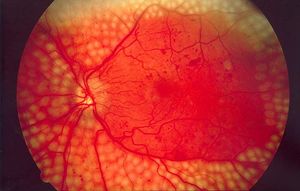If you or someone you know needs to have an eye removed, do not fret. Although the procedure and situation sounds grim, you will find that it is not as bad as you expect.
I was fourteen years old when I was told that my right eye needed to be removed. Due to complications from my retinopathy of prematurity and glaucoma, the eye simply must go. My mom took me to another doctor for a second opinion that simply confirmed the first diagnosis and suggested treatment.
As any parent would be, my mother was devastated at the idea of removing my eye, but I was not too bothered by it. In fact, I was excited that after the procedure, I would not be in such pain. The condition of my eye was so poor that I was not losing any vision from the removal. I was already completely blind in that eye. The only thing I had to lose was the horrible pain I was feeling.
The surgery went very well. I was in and out of the hospital the very same day! I obviously was not too traumatized by the entire ordeal, because upon leaving the hospital, all I wanted was a cheeseburger from McDonald’s with ketchup only.
I had the surgery over my school’s Winter Break. I returned to school on time. When I returned to school, I wore a shield over my eye. A shield is a lightweight metal cover that I would tape over my eye. This curved metal cover helped to protect my healing eye area. The tiny holes in the shield allowed air to flow into my eye. I would simply use medical tape at two or three locations to secure the shield to my face.
Typically, a person can not be fitted for their prostheses until several weeks after surgery. This allows your body time to heal. I chose to wear my shield during this time while outside the home. I felt that my appearance would be inappropriate for others to see.
Anyone who knows the attitudes of high school students would totally understand by reason for avoiding a scene in public. Looking back, I now know that my appearance was not that bad. The upper eyelid will naturally close to cover most of the eye. Contrary to the wild images your mind will muster, there is no gaping black hole to see. When the outer shell of the prosthesis is not in place, the only thing to view from the outside is a small piece of flesh. The inside of the eye looks much like the conjunctiva. The conjunctiva is the pink part of the eye that you see when you pull your bottom eye lid down.
The day you are fitted for your prosthetic shell will certainly be interesting. When I walked into my doctor’s office, I was excited to be a step closer to getting my eye. I dreamed of getting a shell with a Smiley face on it, but I settled for a regular looking eye instead. When Dr. Bruchs came in for my fitting, he carried with him what appeared to be a briefcase. I imagined what frightening instruments could be inside. My eye no longer hurt, but maybe this would change soon, I feared.
To my surprise, inside the container was a wide array of prosthetic shells. When he opened the case, staring out from the box was tens of eyes! Blue eyes, brown eyes, green eyes and more were looking up at me and my mom. Some were larger than others. These eyes were blanks that were to be used for measurements, or patients’ previous prosthetic shells. Yes, I did ask where they came from.
The doctor slowly placed one eye in after another until he found one that fit me properly. I assumed, I would simply take this new buddy home, but I was so misinformed.
After finding the proper size shell, the eye making process began.
Dr. Bruchs tried to pick a color to match my existing eye. No not the color of the iris, but he was trying to color coordinate the white part of my eye. I assumed all eyes were the same in this respect; they are white. Wrong. Your eye can be a variety of shades.
After selecting the right hue for the white of my eye, the doctor measured the appropriate placement for my pupil and iris. He also took note of the color pattern in my iris.
At the time, this process seemed to take awhile, but in reality, it did not take long at all. The next part was to take a good look at my blood veins and prominent vessels in my left eye. In order to make my prosthesis look as true to life and natural as possible, they place blood vessels in the prosthesis. No, real blood vessels are not used. Fuzzy lint from red sweaters are used to mimic blood veins in my eye.
After the fitting, it took a little while for my personal eye to be made. It was hand-painted by an older lady. She applied the appropriate red fuzzies and everything. She certainly did a most wonderful job, because on numerous occasions, no one knew I had a fake eye!
Taking care of my prosthetic shell is much like taking care of a large contact lens. I remove my eye every night before bed. My eye easily slides out by simply lowering my lower lid and pushing upward on my shell slightly. The bottom edge of the shell comes free from the socket area. I use my finger to slide the shell lower to remove it from my upper lid. This is not painful or uncomfortable at all.
Once the shell is out, it simply looks like an odd shaped spoon. Many people feel it is going to be a large round ball, but it is actually a curved shape. The front section with the pupil and iris is rounded. The back is hollowed out to fit properly.
I place the shell in a small cup of saline every night. This is not necessary, but I personally find it to keep my eye clean and comfortable. I use a small denture container when I travel to soak my eye.
Just like a contact lens, your eye can get protein deposits on it. I will occasionally use Opti-Free Protein Remover to remedy this situation. Enzymatic cleaner tablets added to your saline will also do the trick.
Every few years, it may be a good idea to polish your eye. If you notice that your eye becomes dull, ask your doctor to polish your shell for you. Another option is to borrow a Dremel tool. Using a soft buffer pad, you can safely and gently polish your eye at home, for much less money. This option is not for everyone, but if you are up to it, give it a try. My mom or husband has polished my eye on occasion for me.
You will occasionally need a new prosthetic shell. It will probably take ten to twenty years before you need a new one. I have had my current shell for fourteen years now. When it becomes time for a change, you will not need to endure a new operation. Simply a new fitting session will suffice.
The best advice I could give someone about to undergo this procedure is to have a sense of humor. If the operation and prosthesis is a must for you, then have fun with it. You can always put your eye on the television before you walk out of the room and tell your kids that you are watching them.
I absolutely love the joke about the lady eating dinner in a restaurant. When she sneezes, a gentleman at the next table quickly grabs her prosthesis that was flying through the air. Later they were married. When asked how they met, the wife explains that her husband caught her eye.
Having an eye removed can be a stressful time, but it will not be anything like you may imagine. The process will go much smoother if you keep a great sense of humor about the situation.




